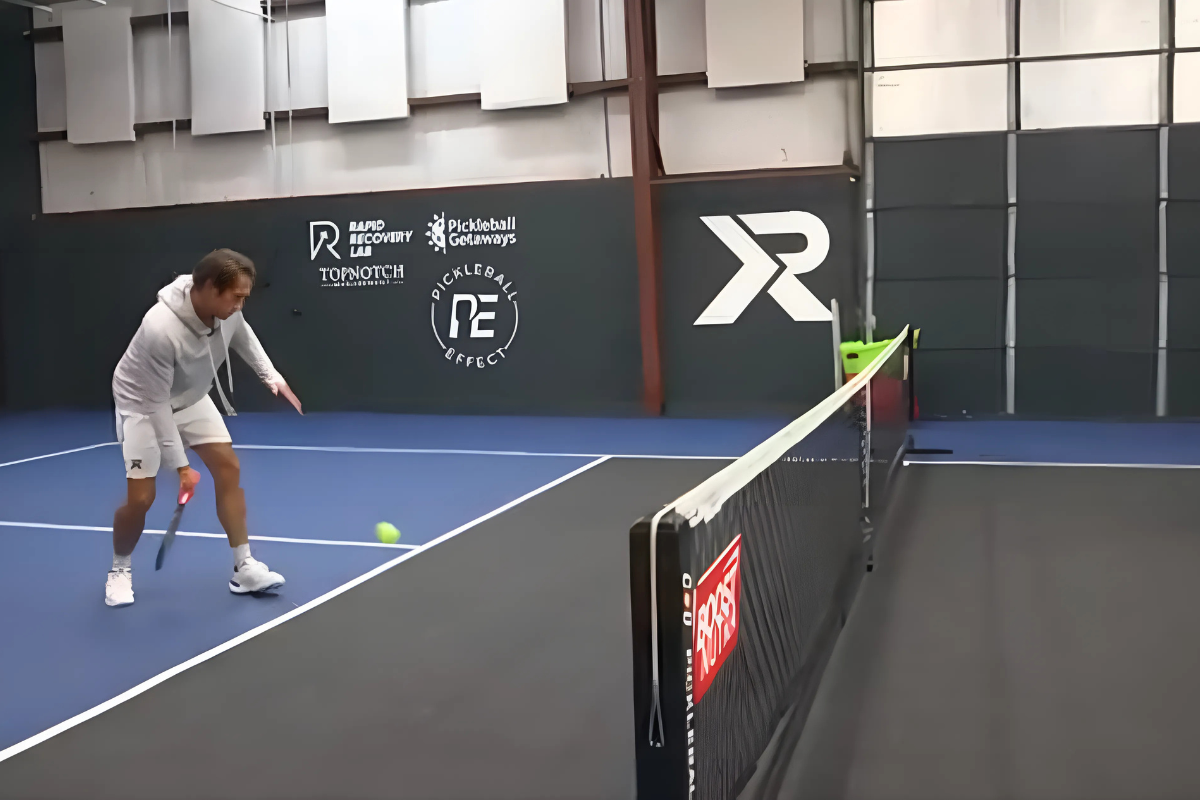In 2020, pro pickleball looked very different than it does today. Fast forward to 2025, and there’s one undeniable truth:
If you’re not top-spinnin’, you’re not winnin’.
Topspin dinks have become a key weapon at the pro level. Players who can’t attack and control the ball with topspin are falling behind. In this post, I’ll break down when to use topspin dinks, how to execute them properly (especially on the forehand side), and why paddle tech has made this shot more accessible than ever.
When to Use Topspin Dinks
Let’s get one thing straight—you shouldn’t be ripping topspin dinks all the time. There’s a time and place for it. Because of the closed paddle face and upward swing path required, topspin dinks have less margin for error than your standard slice dink.
So when is the right time to go aggressive?
You need these 3 things:
- You’re in good position—not stretched out or off balance.
- You’re holding your ground at the kitchen line.
- You’re making contact in front of your body.
If you’re falling back, reaching wide, or reacting late, your topspin dink is more likely to float—or dump into the net. Be selective, and the shot will do work for you.
Why Paddle Tech Matters
You can’t create quality spin without the right gear.
That’s why I use ProXR. Their paddles are designed to grip the ball and make it easier to generate topspin and shape.
🎁 Bonus for my YouTube fam:
Use code ZNPSubscriber at checkout to get 10% off your ProXR paddle + free shipping on my website.
How to Hit a Topspin Dink (Forehand)
Here’s the breakdown:
1. Preparation
Start with a slight upper-body coil using your non-dominant hand. This helps you load your core and control the swing.
I also recommend “cornering the ball” so you have multiple attack options. (If you’re not sure what that means, I break it down here.)
2. Get Under the Ball
Drop your paddle head about one paddle-height below the incoming shot.
This low-to-high path is crucial to creating spin.
3. Close the Paddle Face (But Not Too Much)
You’re not changing your grip—just angling the paddle slightly closed. A little goes a long way.
4. Make Contact in Front
Aim for about one forearm length in front of your body. Maintain your paddle angle through the swing.
⚠️ Pro Tip: You don’t need to use your wrist. Some pros do, but for most players, it adds unnecessary risk. Focus on a clean, controlled brush up the ball.
5. Compact Follow-Through
Skip the big tennis-style finish. Instead, return your paddle to your ready position. This keeps your dinks tight and prevents accidental pop-ups.
Best Target? Go Crosscourt
Crosscourt dinks give you the most space (24 feet diagonally vs. 14 feet straight on). That extra distance gives your topspin time to dip and kick. Mix up your placement, of course, but work on the crosscourt shot first—it’s the easiest place to build confidence and control.
A Simple Drill to Practice
One of my favorite drills:
- Player A: Hits slice dinks to build consistency
- Player B: Practices topspin dinks with controlled aggression
Switch roles after a few minutes. It’s simple and super effective.
Want Personalized Help?
Still have questions? Book a custom video response from me on Cameo. I’ll break down your mechanics, answer specific questions, or just give you a shoutout.
🎥 And don’t forget—subscribe to my channel, because next up, I’m breaking down the backhand topspin dink.
See you on the court.





Leave a comment
This site is protected by hCaptcha and the hCaptcha Privacy Policy and Terms of Service apply.